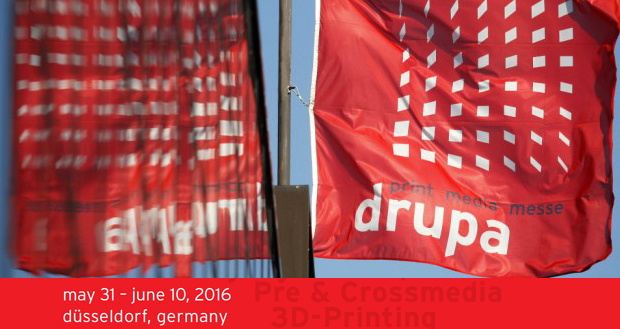
drupa organisers are expecting more than 350,000 visitors according to Messe Düsseldorf CEO and president, Werner Matthias Dornscheidt.
Print professionals will be walking the 19 halls of drupa, in search of technologies and solutions that will give their businesses a desperately needed edge at a time of unimaginable change in their industry.
More than 1850 exhibitor companies from more than 50 countries will be spruiking their offerings on 166,000sq m of exhibition space. In contrast, there is a single exhibitor from Australia – Peter Skarpetis’ Serendipity Software (Hall 08b/A72) – and a massive 11,000sq m representation by companies from China.
Visitors to drupa from developed countries, Australia among them, will do so at a time of unprecedented market saturation, whilst those from developing countries are continuing to experience dynamic development. In Asia, for example, print market volume has increased from €133bn to €168bn (A$163.6bn to A$206.6bn).
The growth in adoption of digital printing continues unabated including printing on demand, personalisation and printed electronics. Pira research predicts that by 2015, with around €122bn (A$150bn) in revenue, approximately 30 per cent of print products will be digitally manufactured worldwide.
As a measure of this market segment’s growth, six halls are devoted to digital print at drupa 2012, up from four in 2008.
Also addressing the trade press conference, Bernhard Schreier, chairman of the drupa 2012 Exhibitors Advisory Board (and chairman of Heidelberger Druckmaschinen AG), told the media how the dramatic changes affecting the printing industry had influenced the organisation of drupa 2012.
“One major change is the stark shift of markets and business fields,” says Schreier. “The economic crisis three years ago and the current insecure situation in the Euro zone have caused significant market changes, which will continue in the future.
“We must clearly differentiate between saturated and growth markets. In Western industrialised countries, the print market is stagnant at a high level.
“Pira predicts global growth in the print market at 1 to 1.5 percent per year until 2016. It is mainly focussed on the developing countries in Asia and Latin America. China is the most striking example of this.
“In 2009, €42bn in print orders were received. That is a doubling of market volume within just six years. The most important reason for these varying developments is easy to follow. In developing countries there is an enormous amount of catching up to do in almost all economic areas – especially in packaging printing.
“This is the second structural transition. Worldwide printing volume is increasing, but not all sectors profit from it. Classical ad and media printing are in part on the decline on industrialised markets. The emphasis here lies on ‘classical’, which I will explain in greater detail. The large growth market is packaging.
“Until recently, a majority of goods in countries like China or India were wrapped in newspaper or packed in bulk and sold over the store counter. In the meantime, there are supermarkets emerging everywhere that need packaged and printed goods. The number of consumers is growing, and they consciously choose appealingly packaged goods and brands.
“Even in Western industrial nations, the variety is increasing. The importance of packaging as an image and advertising medium is growing. All in all, in this segment we are speaking of a global growth rates of around 7 per cent until 2014.
“We are also observing a third transition, which I have touched on earlier. Today we must differentiate between classical and new print forms. For ages, printing stood for the publishing of contents on media.
“Digital media today offer faster, more versatile possibilities. This does, however, not automatically lead to pushing out the print media channel. Rather, we are at the beginning of a comprehensive and exciting integration process for both lines. This creates new perspectives and opportunities for the print industry,” explains Schreier.
The 15th drupa begins on May 3, when Australian Printer editor, Wayne Robinson will lead a team of experts in reporting to you from the Olympics of Print.
For more drupa stories, click here: drupa
Comment below to have your say on this story.
If you have a news story or tip-off, get in touch at editorial@sprinter.com.au.
Sign up to the Sprinter newsletter



